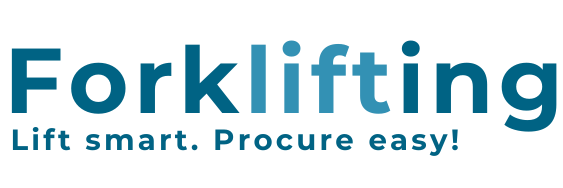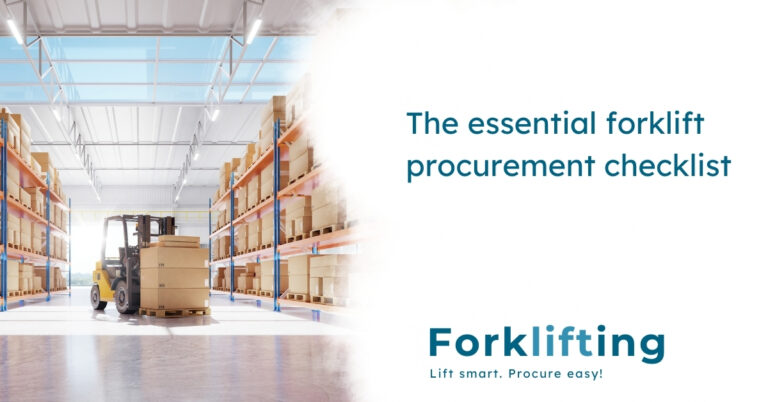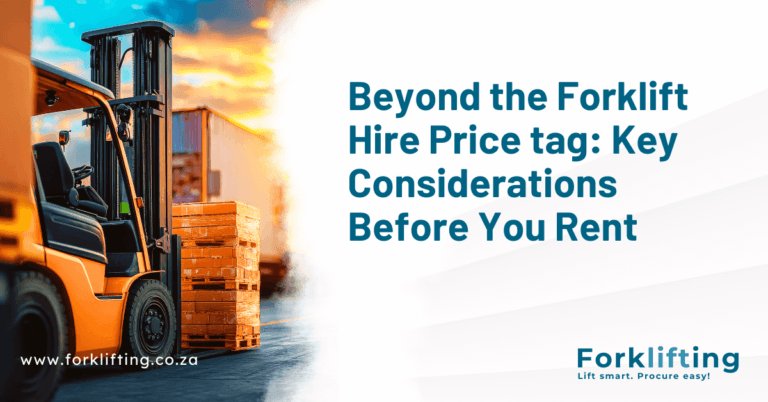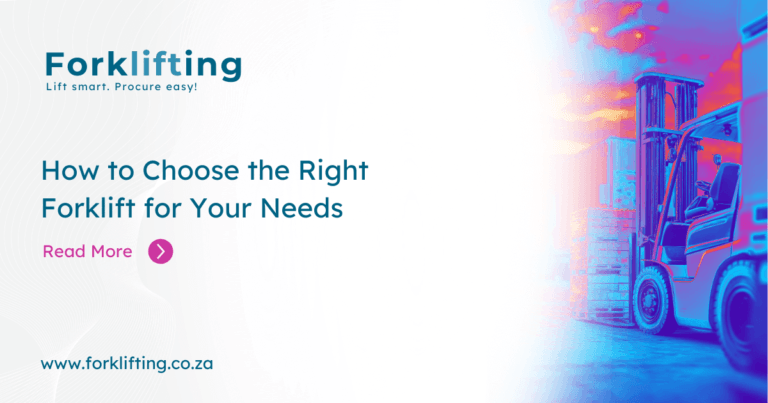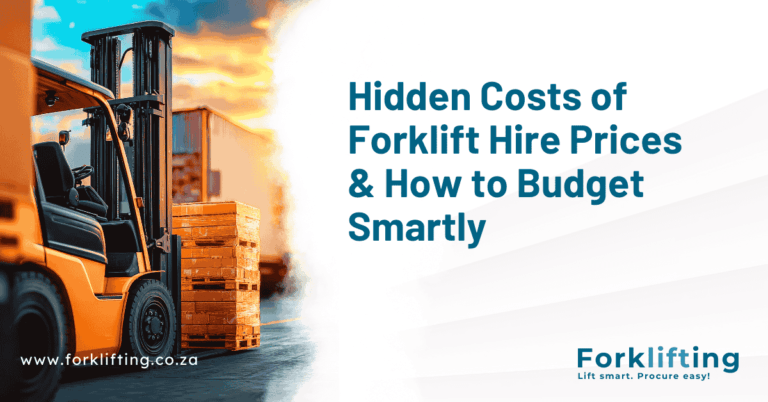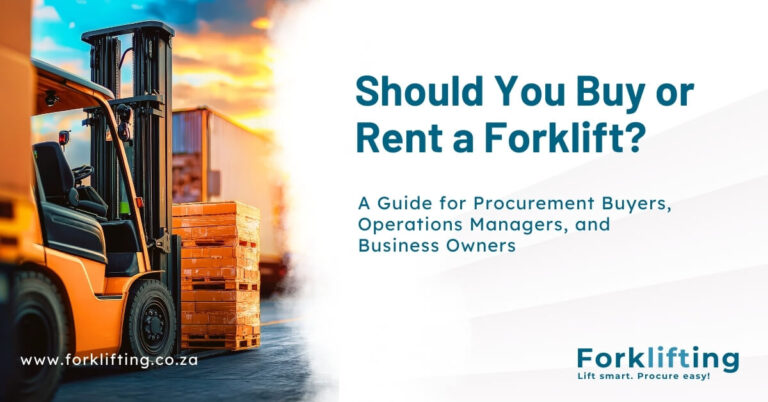Forklifts are indispensable tools used across all industries such as warehouses, construction sites, and factories. They help streamline operations, moving heavy loads efficiently, and reducing manual labor. However, they also come with significant safety risks if not operated properly. As a business owner or operations manager, it’s your responsibility to ensure that the forklift hire process adheres to safety standards and regulations.
Before hiring a forklift, it’s crucial to conduct a thorough safety review to avoid compliance risks and protect both your team and your business. This blog will guide you through a safety checklist that highlights key safety and training requirements you need to consider when hiring a forklift.
1. Understand Local Regulations and Compliance
Each country and region has its own set of rules and regulations regarding forklift operation. These regulations are designed to ensure safety on job sites and reduce the risk of accidents. Familiarise yourself with the local laws and compliance standards related to forklift operations in your industry.
In South Africa, for example, the Occupational Health and Safety Act 85 of 1993 must be read with the regulations for driven machinery. sets strict guidelines for forklift safety, including the type of forklifts allowed in different environments, maintenance procedures and operator certification requirements.
2. Choose the Right Forklift for Your Needs
Not all forklifts are created equal. The type of forklift you need will depend on your specific needs and the environment in which it will be used. Forklifts come in various designs, including:
- Counterbalance forklifts: The most common type, suitable for general operations.
- Reach forklifts: Used in narrow aisles for lifting pallets.
- Rough terrain forklifts: Designed for outdoor, uneven surfaces.
- Electric forklifts: Ideal for indoor use where emissions from gas-powered forklifts are not safe.
Choosing the right type of forklift is essential for ensuring safety. The wrong equipment for your environment can lead to accidents or damage to the forklift itself. Ensure the hire company offers forklifts suited to your specific operational needs, whether indoors or outdoors, and in narrow or spacious areas.
3. Ensure Forklift Operator Training and Certification
One of the most important factors in forklift safety is the operator. A trained and certified operator significantly reduces the risk of accidents and injuries on the job. Before hiring a forklift, ensure that your operators have the necessary training and certification.
In many countries, including South Africa, forklift operators must complete a formal training program that includes both theoretical and practical assessments. Operators should understand how to operate the forklift safely, inspect it for potential hazards, and maintain it properly.
Additionally, it’s important to verify that the training provider of your choice is accredited. Make sure to check your forklift hire company’s requirements as well – some providers might offer operator training as an additional service, while others may not.
4. Forklift Maintenance and Safety Inspections
Before hiring a forklift, ensure that it has undergone a thorough safety inspection. A pre-hire inspection is crucial to identify any existing issues that might pose a safety risk to operators and workers.
The forklift should be inspected for:
- Brakes: The braking system should function correctly to prevent accidents.
- Forks and Load Handling: Ensure that forks are in good condition, free from cracks or damage, and that load-handling features like the mast, chains, and hydraulics are all functioning properly.
- Tires: Check for wear and tear. Forklift tires are designed to handle specific environments, and using the wrong tires for your application can be hazardous.
- Lights and Horns: Verify that safety features like lights and horns are working properly, particularly if the forklift will be operating in low visibility conditions or where noise warnings are necessary.
Your hire company should provide you with records of recent safety inspections and maintenance work carried out on the forklift. If they can’t provide this documentation, consider this a red flag.
5. Workplace Safety and Environment Evaluation
Forklifts need an environment that ensures safe operation. Before the forklift arrives, assess your workplace and ensure that it is safe for forklift operation.
Key safety considerations include:
- Clear Pathways: Ensure that there is adequate space for the forklift to operate. Narrow aisles or cluttered workspaces increase the risk of accidents. Create clear pathways for the forklift to navigate and ensure that materials are properly stored away from high-traffic areas.
- Adequate Lighting: Poor lighting can lead to poor visibility, which increases the risk of collisions. Make sure your warehouse or worksite is well-lit, especially if your forklift will be operating at night or in areas with limited light.
- Floor Conditions: Forklifts work best on flat, smooth surfaces. If your workplace has uneven floors, potholes, or other hazards, the forklift may become unstable and prone to tipping over. Address any environmental hazards before bringing in a forklift.
- Pedestrian Safety: Always separate pedestrian and forklift traffic to minimize the risk of injury. Consider floor markings, safety barriers, and warning signs to maintain safe distances between pedestrians and forklift operators.
6. Forklift Safety Features
Modern forklifts are equipped with a variety of safety features designed to protect operators and workers. These include:
- Seat Belts: Ensuring that seat belts are worn at all times is one of the easiest ways to prevent injury in the event of a forklift tipping over.
- Overhead Guards: Overhead guards are designed to protect the operator from falling objects. If your workplace involves stacking materials, these safety features are crucial.
- Load Limit Indicators: Some forklifts come with load limit indicators that alert the operator if they are exceeding the safe weight capacity.
- Warning Alarms: Audible alarms or flashing lights can help alert pedestrians and other workers to the forklift’s movement, preventing collisions.
Check that these features are present and in good working condition on any forklift you hire.
7. Review the Forklift Rental Contract for Safety Clauses
Finally, it’s essential to review the terms of the forklift hire contract to ensure that the rental company is providing a safe, well-maintained forklift. The contract should outline the forklift’s safety inspection history, maintenance responsibilities, and any liability for accidents or damage caused by equipment failure.
Ensure that the rental company takes full responsibility for the equipment’s safety standards and maintenance. If the contract places the responsibility on your company, be aware of the added costs that might come with maintaining safety.
Conclusion
Hiring a forklift is an important business decision that can enhance efficiency and productivity, but it’s vital to ensure that you’re not overlooking the safety aspects. By following this safety checklist and ensuring proper training, maintenance, and workplace safety, you can avoid compliance risks and prevent accidents in the workplace. Always prioritise safety for your team, and take the necessary steps to ensure the forklift is a tool that improves your operations without introducing unnecessary risks.
Ready to request a quote for forklift hire?
Visit our Forklift for Hire page to learn more about forklift rentals or request a quote for to find an affordable forklift to rent.
